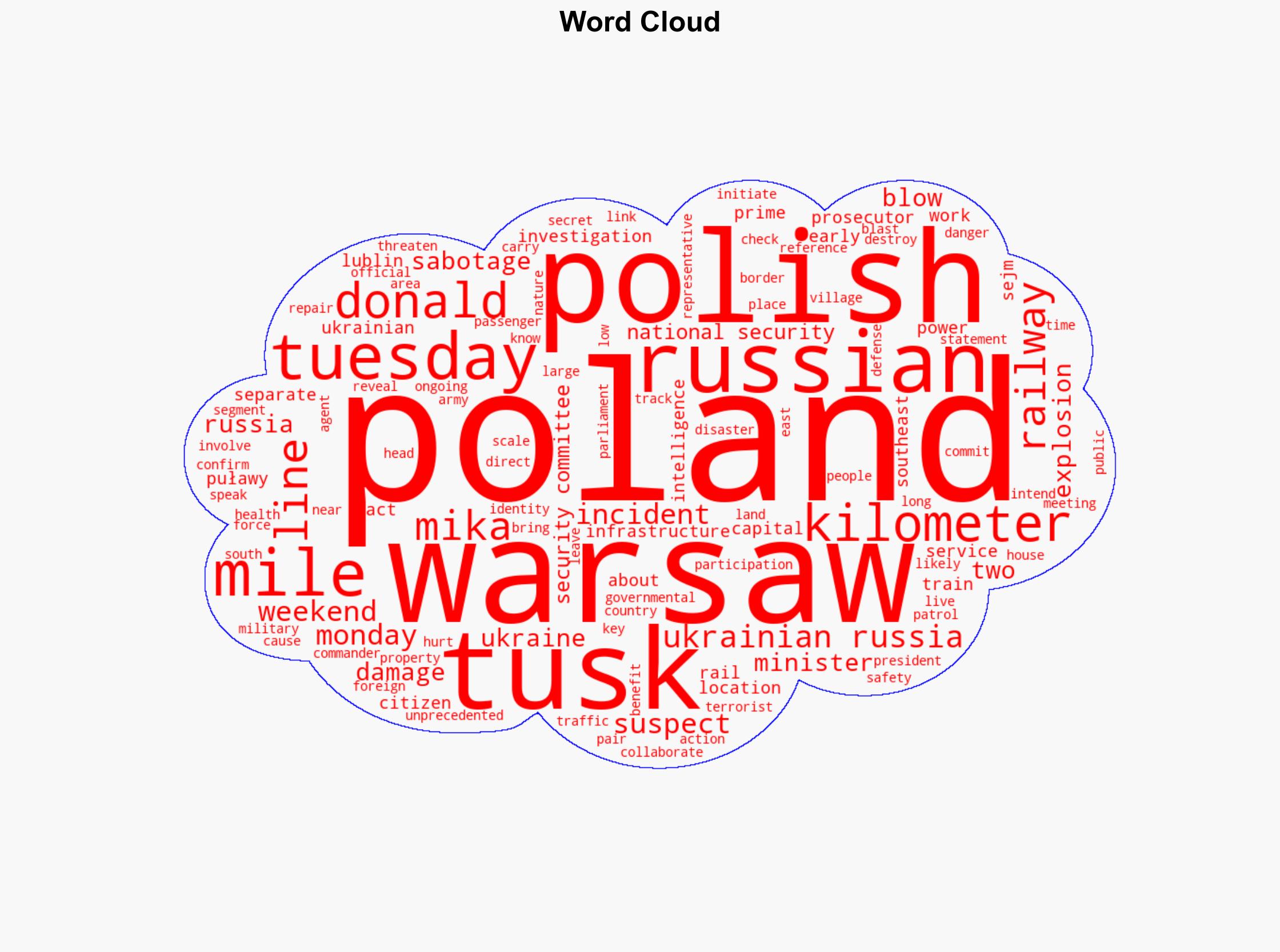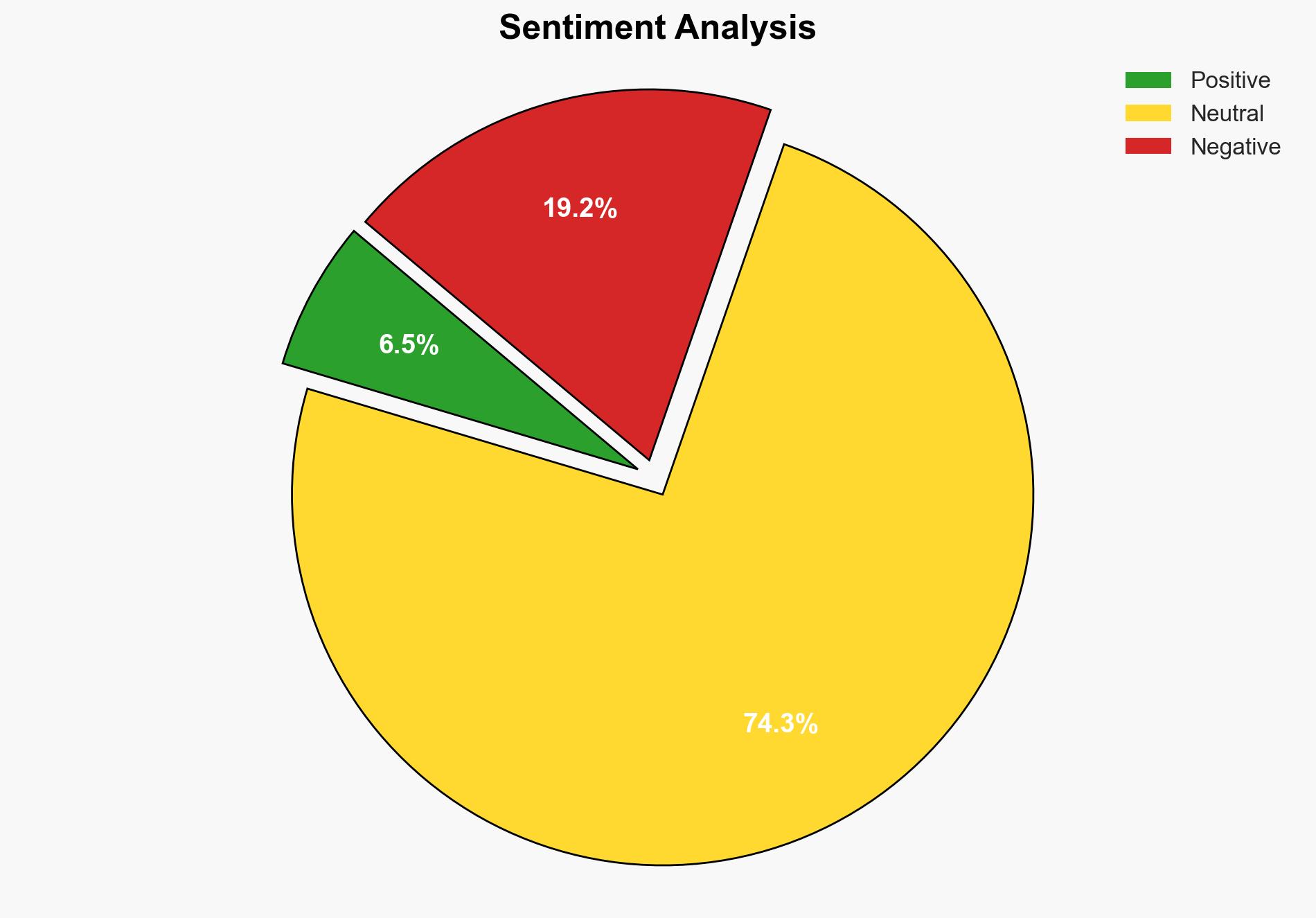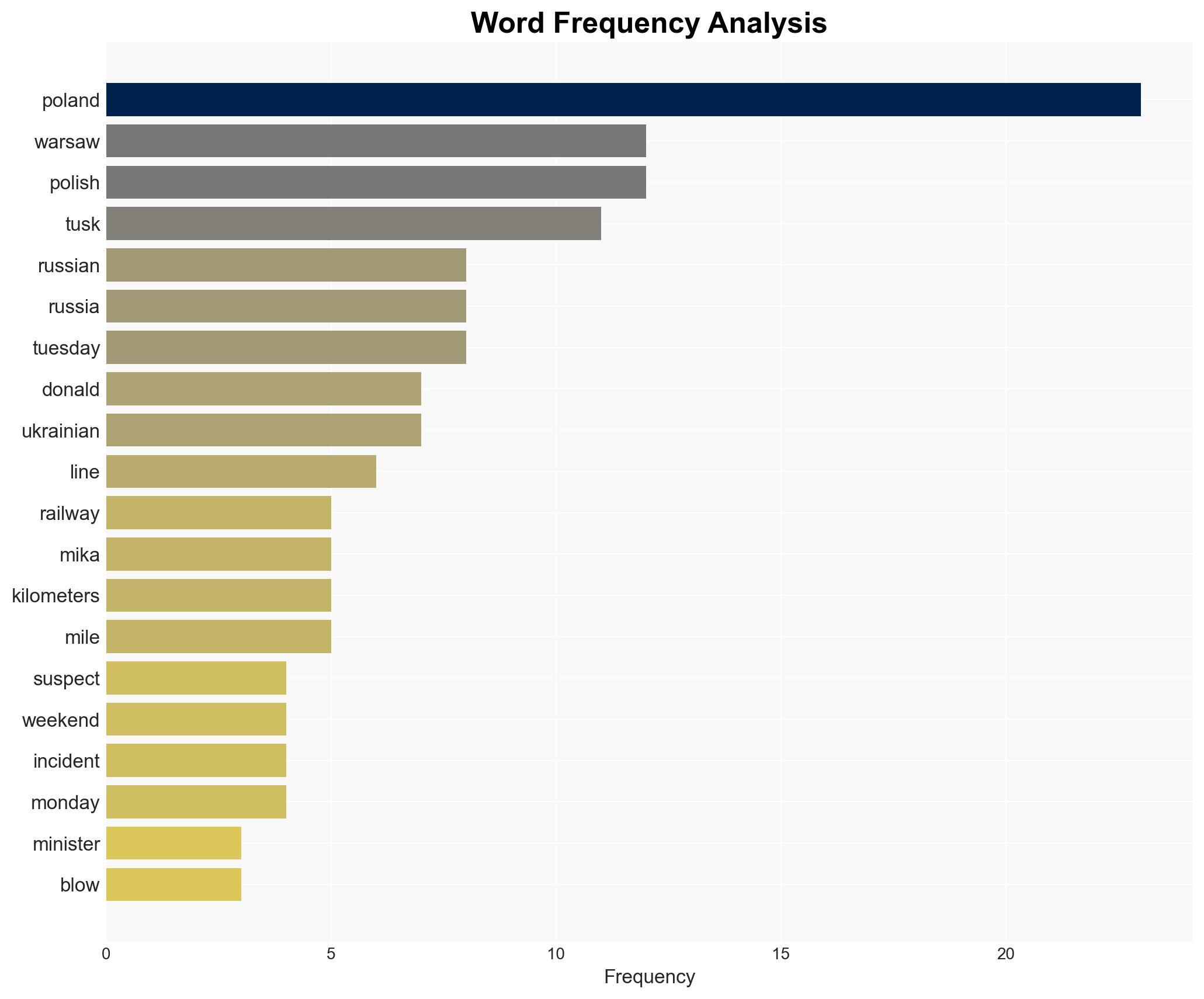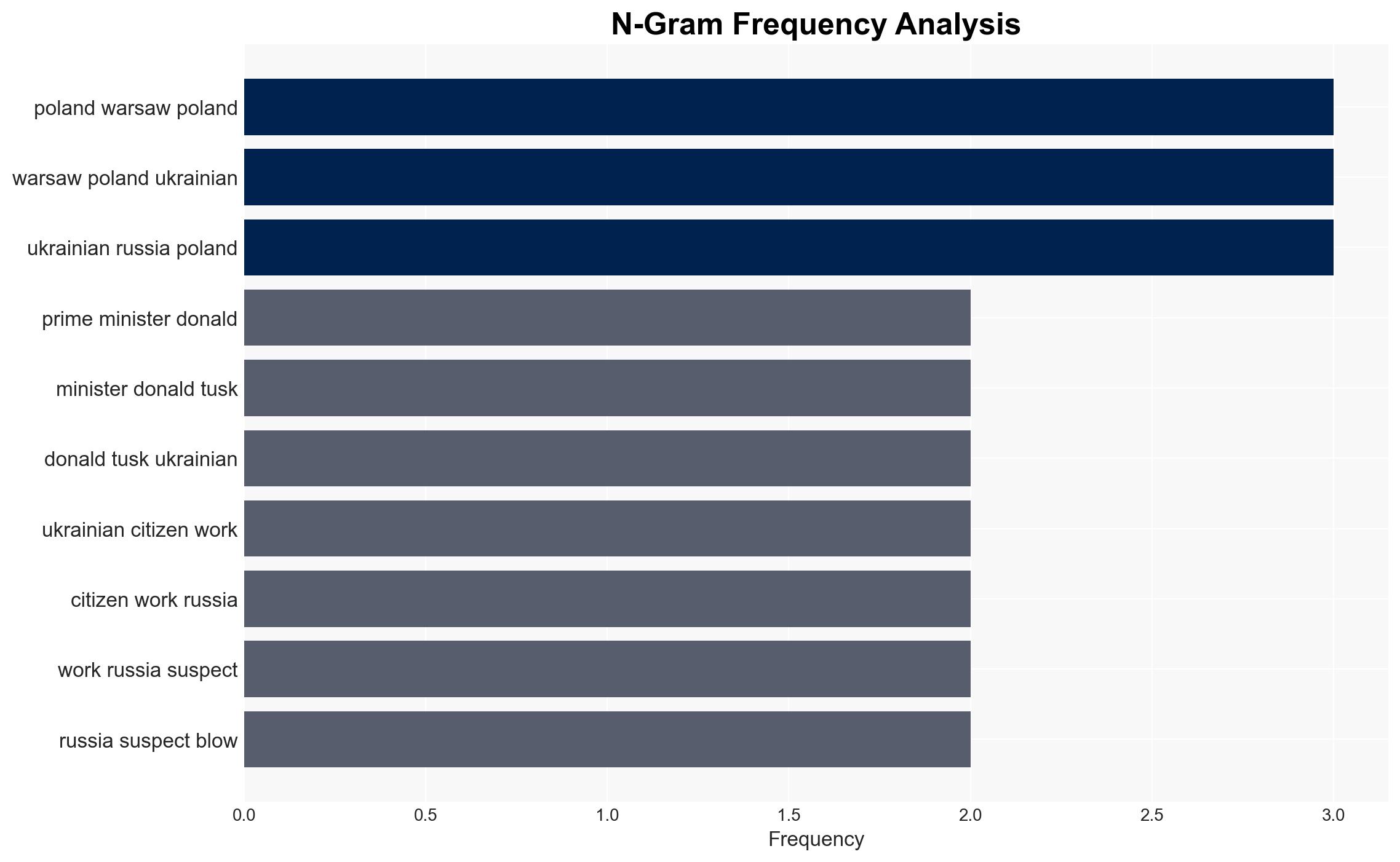Poland suggests Russia is behind railway blast on Ukraine delivery line – ABC News
Published on: 2025-11-18
AI-powered OSINT brief from verified open sources. Automated NLP signal extraction with human verification. See our Methodology and Why WorldWideWatchers.
Intelligence Report:
1. BLUF (Bottom Line Up Front)
With a moderate confidence level, the most supported hypothesis is that the railway blast in Poland was orchestrated by Russian agents using Ukrainian nationals to destabilize the region and disrupt logistical support to Ukraine. Recommended actions include enhancing security measures on critical infrastructure and increasing intelligence sharing among NATO allies.
2. Competing Hypotheses
Hypothesis 1: Russian agents, potentially collaborating with Ukrainian nationals, orchestrated the railway blast to disrupt supply lines and create instability in the region. This hypothesis is supported by Poland’s Prime Minister’s statements and the historical context of Russian tactics.
Hypothesis 2: The incident was an independent act of sabotage by non-state actors or criminal elements, possibly for financial gain or political motives unrelated to state-sponsored terrorism. This hypothesis considers the possibility of opportunistic sabotage amidst the ongoing conflict.
Hypothesis 1 is more likely given the geopolitical context, Poland’s direct accusation, and Russia’s historical use of hybrid warfare tactics.
3. Key Assumptions and Red Flags
Assumptions: It is assumed that Polish intelligence has credible evidence linking the suspects to Russian intelligence. The reliability of this evidence is crucial for the validity of Hypothesis 1.
Red Flags: The lack of public disclosure of the suspects’ identities and the ongoing investigation may indicate caution or uncertainty in the evidence. Additionally, the potential for misinformation or propaganda from involved parties could skew interpretations.
4. Implications and Strategic Risks
The incident could escalate tensions between NATO and Russia, potentially leading to increased military readiness and further diplomatic strains. Economically, disruptions in railway logistics could affect regional trade and supply chains. Politically, this could bolster support for increased defense spending and security measures in Eastern Europe.
5. Recommendations and Outlook
- Enhance surveillance and security protocols on critical infrastructure, particularly those involved in logistics to Ukraine.
- Increase intelligence sharing and coordination among NATO allies to preempt further acts of sabotage.
- Best-case scenario: The investigation conclusively identifies the perpetrators, leading to diplomatic resolutions and increased security measures.
- Worst-case scenario: Further acts of sabotage occur, leading to military escalation and significant regional instability.
- Most-likely scenario: Continued low-level sabotage attempts with increased security responses and diplomatic tensions.
6. Key Individuals and Entities
Donald Tusk (Poland’s Prime Minister), Polish National Security Committee, Russian intelligence services.
7. Thematic Tags
Structured Analytic Techniques Applied
- Cognitive Bias Stress Test: Expose and correct potential biases in assessments through red-teaming and structured challenge.
- Bayesian Scenario Modeling: Use probabilistic forecasting for conflict trajectories or escalation likelihood.
- Network Influence Mapping: Map relationships between state and non-state actors for impact estimation.
Explore more:
National Security Threats Briefs ·
Daily Summary ·
Support us





